Personalizing a lunch ordering service for mobile
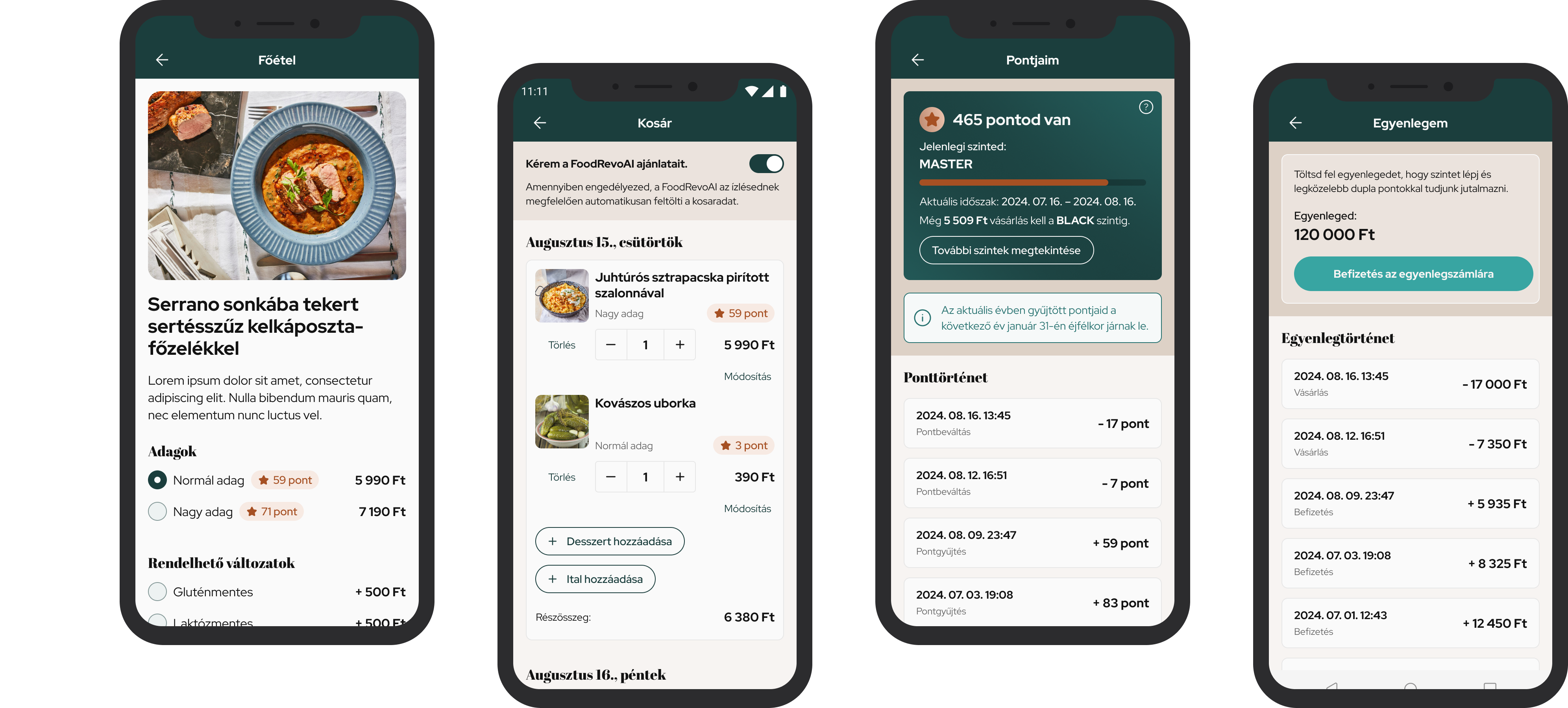
Food Revolution is a food delivery service offering a weekly subscription for premium lunches, delivered to homes in the Budapest area. To further improve their service, an AI-powered mobile application was designed.
In October 2025, the app was launched, however, the final version includes modifications based on new business priorities that emerged during the development cycle. This case study presents the final UX and UI solutions that I designed and handed off to the development team.
Goal
To place orders on mobile while providing extra features.
Customers can also order their food on the website, but their engagement should be increased through offers by collecting points and using AI to customize their basket.
The company may be known from the popular TV show "Cápák között" (the Hungarian version of "Shark Tank"). The project was a collaboration between Konstruktor Online and OS.labs.
Problem statement
The website is not personalized.
Also, textual display is not beneficial.
The service targets wealthy, middle-aged, single sports enthusiasts who are mindful of their diet. Therefore, information about the ingredients is important to them, but at the same time, they prefer not to spend too much time putting the orders together.
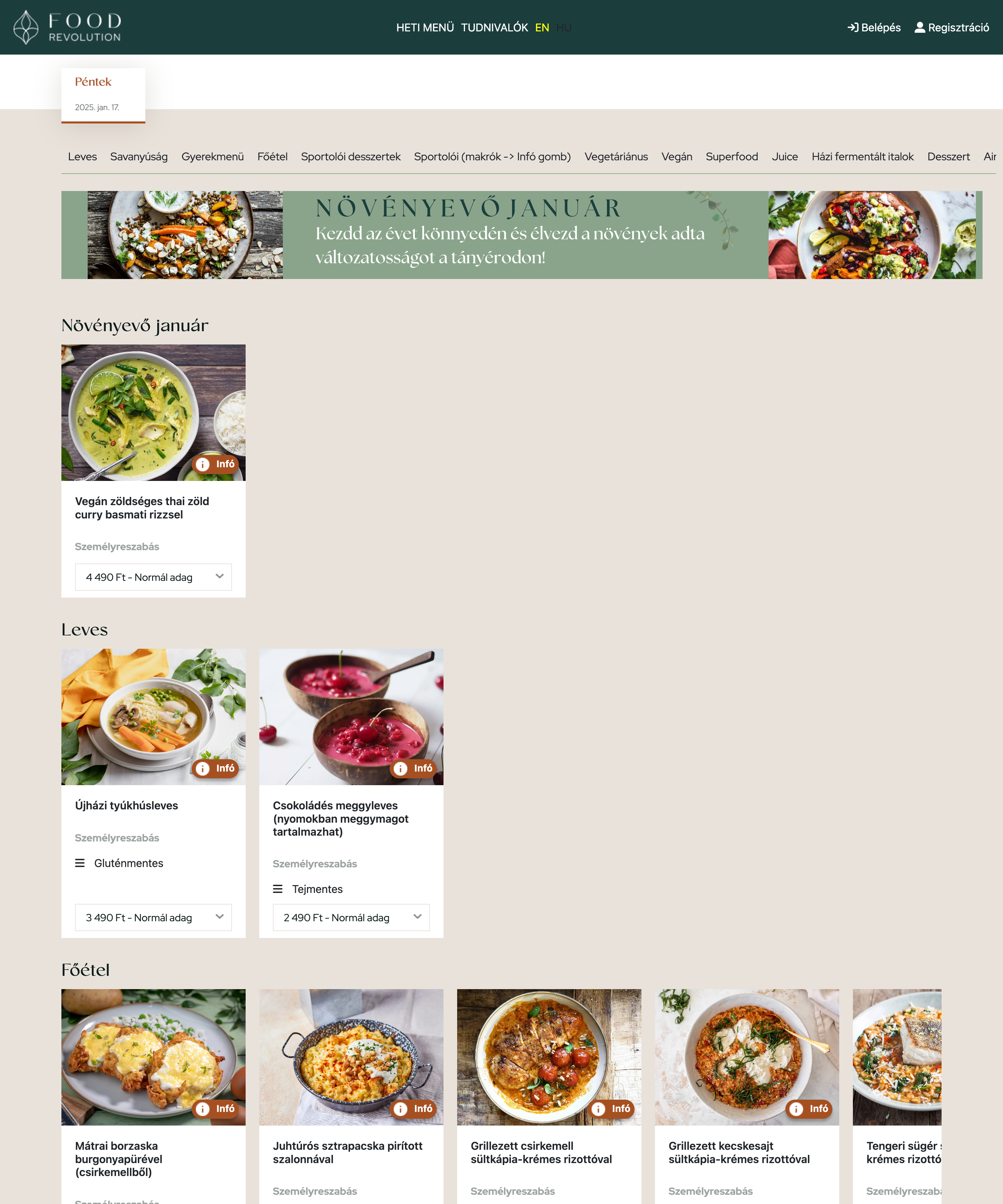
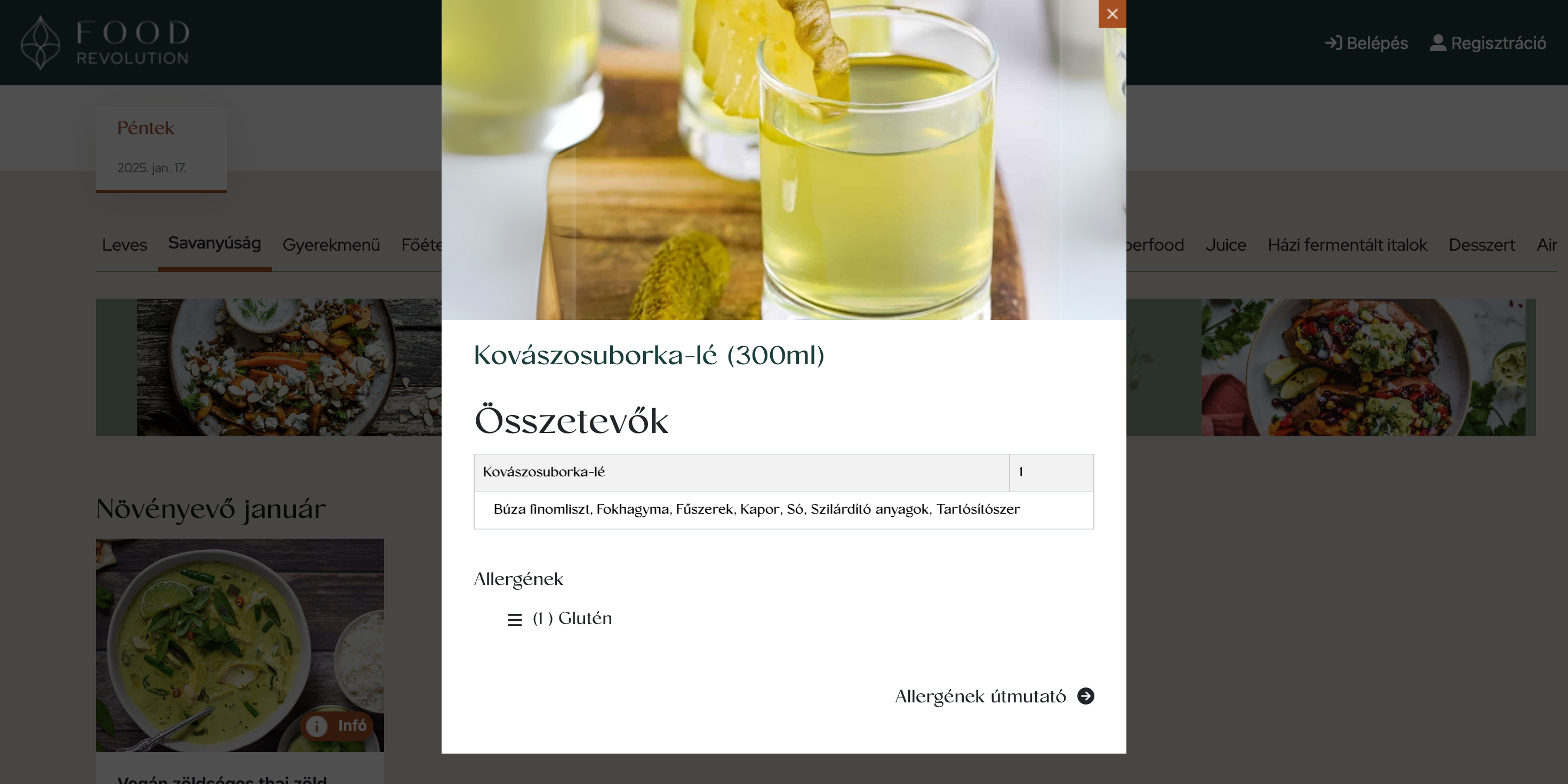
High-fidelity wireframes and flows
The mobile application of Food Revolution should be user-centric, but business needs must also be considered.
I had just 65 hours to deliver the UX/UI design (including the design system).
When selecting food from the menu, users can choose different portion sizes (regular or large), variations (gluten-free or sugar-free) and extras (toppings, side dishes, etc.). They can also view macro values, ingredients and allergy information.

If enabled, the AI automatically adds food to the basket based on preferences. When users first start using the app, this feature is inactive, as it needs to learn their tastes by allowing them to select their favorite items during the first few orders. For example, if they consistently choose meat-free options, the AI will infer that they likely follow a vegan lifestyle and will start recommending vegan foods in the future.
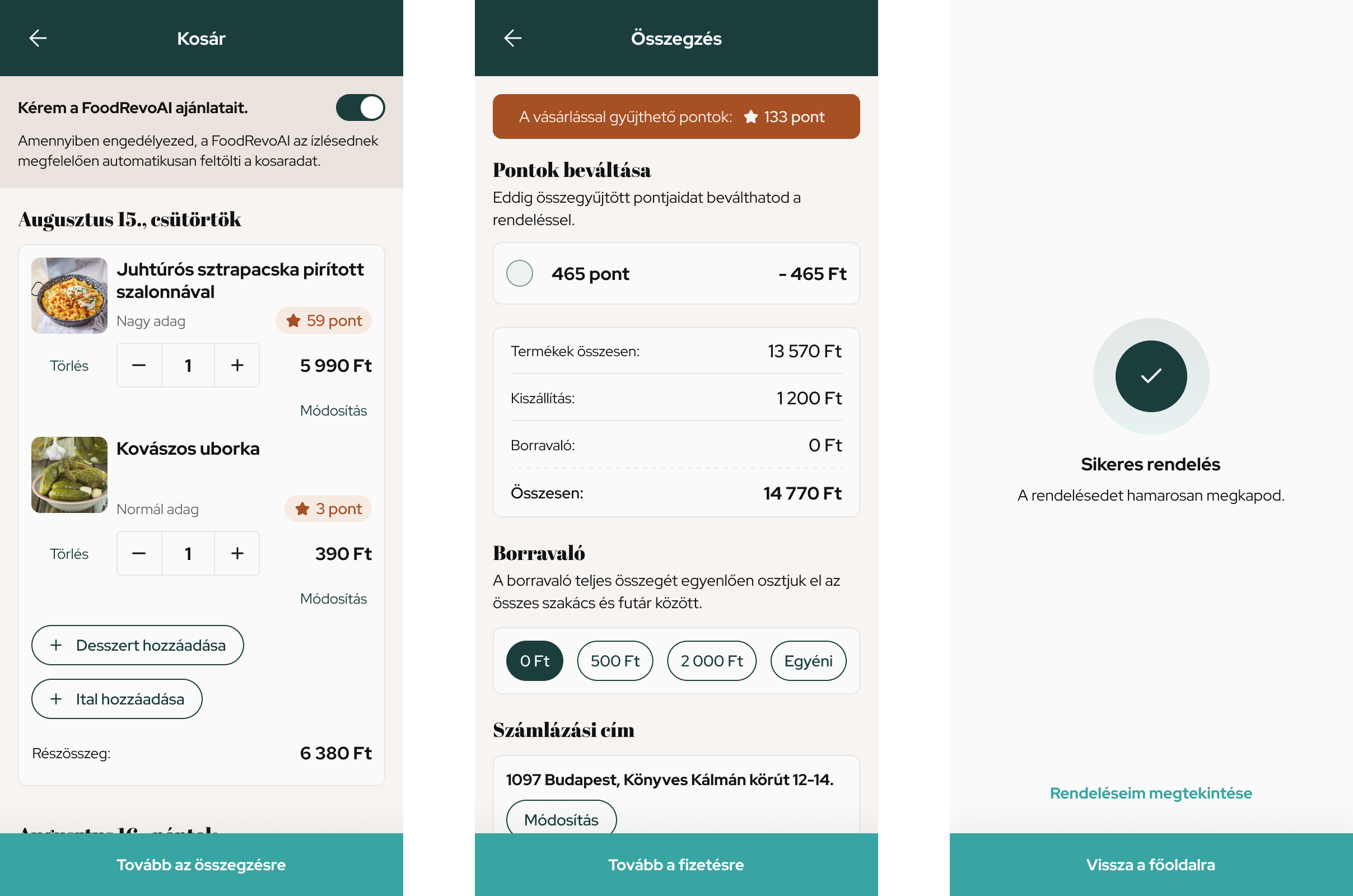
Users can earn points by making orders. These points can be exchanged for Forints and redeemed. There are rewards available on levels. Points expire after a certain period of time if no orders are placed and users might be dropped to lower levels.
They can also maintain a balance, allowing them to pre-load money for future use.
In the settings, they can enable notifications and manage personal data.
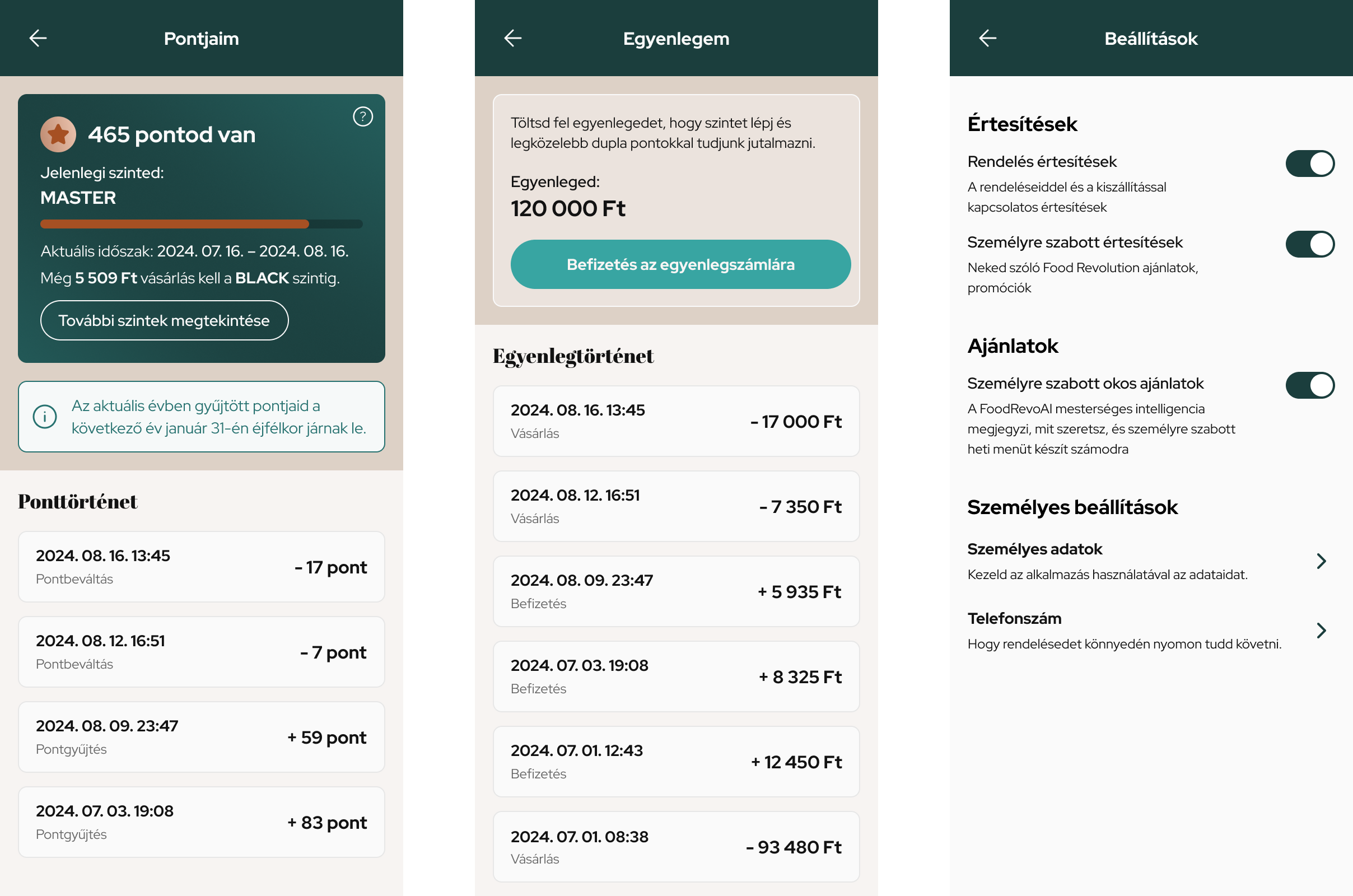
Some frames are highlighted:

Outcomes
In October 2025, the application was launched with a version which is different from what I designed.
The interfaces presented above reflect the ideal user experience, aiming for maximum clarity and efficiency.
This project was a valuable lesson in navigating the realities of product development. The most successful outcomes happen when designers remain embedded with developers during the build phase and clients during the scope changes to help resolve compromises and ensure the UX strategy is never lost.